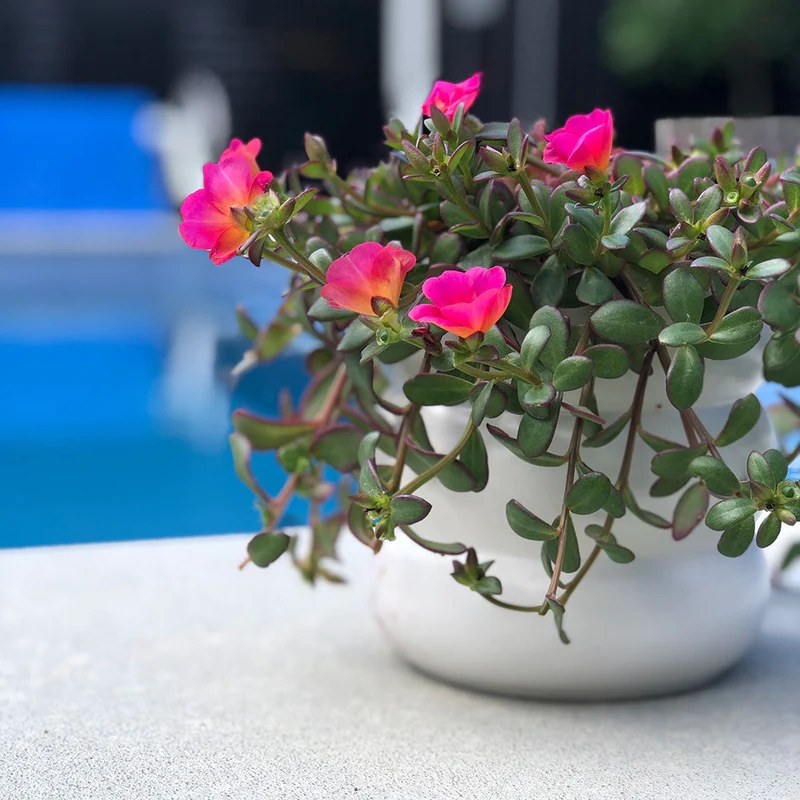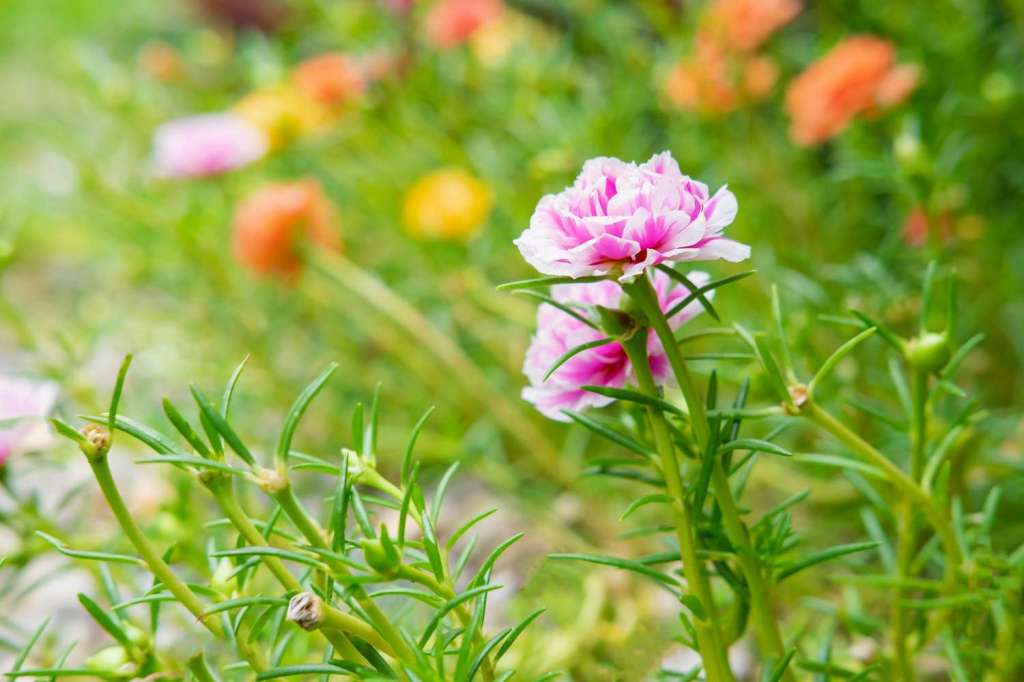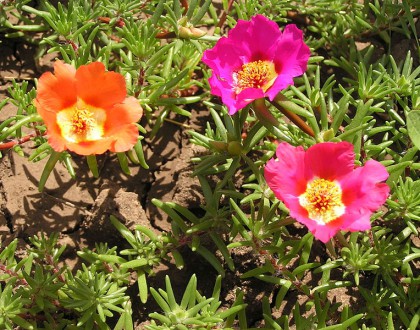
I absolutely love portulacas, my grandmother grew them every year and I have continued that tradition. They are a lovely little flower that blooms from spring to fall.
Portulacas are annuals, the flowers open each morning and close in the evening. They attract butterflies, bees, and hummingbirds.
They do well in flowerbeds, gardens and hanging planters and come in a wide variety of colors including white, yellow, orange, coral, fuchsia, pink, red, apricot, rose, tangerine, scarlet, magenta, lavender, purple and more.
They come in a single, semi, or double form and produce delicate, rose-like flowers and fleshy succulent foliage that pops up in needles along the stem.
Common names for portulaca are moss rose, purslane and sun rose.

Types of Portulacas
There are over 100 varieties of portulaca including Moss Rose, Double Portulaca, Mojave Tangerine, Mojave Pink, Sundance, Rio Rose, Margarita Rosita, Wingpod Purslane, Rio Grande Scarlet, Tequila Sunrise, Fairytale Sleeping Beauty, Fairytale Snow White, Happy Hour Deep Red, Happy Trails Fuchsia, Happy Trails Yellow, Samba Pink, Sundial Peach, Sundial Peppermint, Sunseeker White, Sunseeker Orange, Duet, Pink Ice, and Rio Apricot.
All varieties are lovely and can be planted together. Ordering seeds is the easiest way to get the varieties you want. Most garden centers and greenhouses offer just the most common types.
Portulacas are very low maintenance, hardy and draught tolerant, require no pruning and are pest resistant. They do well in a variety of soil mixtures, if you are planting them in pots be sure they have good drainage. They thrive in full sun and often do well with just rainwater, but if you live in a dry climate or they are planted in pots, water them when the soil becomes dry but avoid overwatering, like other succulents they don’t do well in water drenched soil.
Portulacas don’t require much (if any) additional fertilizer. If the flowers are growing in poor soil, you can give them a light feeding of fertilizer just once or twice during the growing season. Too much fertilizer can cause excessive foliage growth or root damage, limiting the number of flowers they produce.
You can deadhead portulacas to encourage more flowers to grow.
In the fall you can collect the seeds for planting next year. Seeds can also spread naturally and produce plants the following year. I have seen this happen several times when growing portulacas, but I prefer to collect the seeds as allowing them to spread naturally does not always produce flowers the following year.
